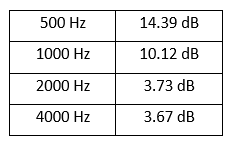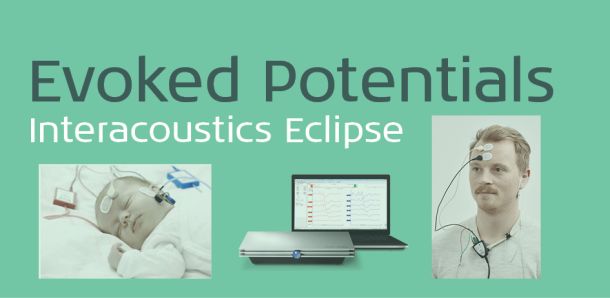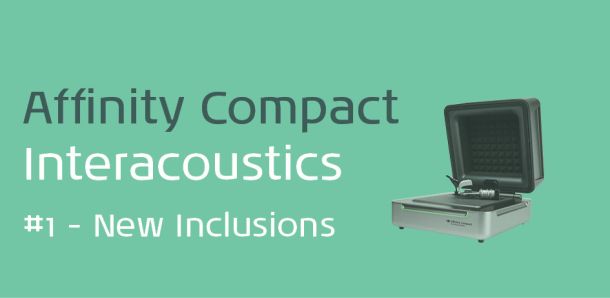ABR & ASSR Comparison on the Interacoustics Eclipse
The introduction of the new Eclipse ASSR technology has encouraged more and more clinics to make ASSR an integral part of their newborn hearing test protocol. How can we utilise ASSR results and what should we keep in mind when comparing them to ABR thresholds? This blog post will attempt to answer these questions and provide important points for consideration.
For clinicians who have not used the Eclipse ASSR platform, here is a link to a quick video explaining the testing process: What is ASSR Hearing Testing.
The ASSR module on the Eclipse enables testing all 4 main frequencies in both ears at the same time. It uses a CE-Chirp stimulus and a powerful detection algorithm which improves threshold detection. ASSR is an objective test showing the statistical certainty of a result rather than looking for a wave V on an ABR waveform. In view of this, research has found that the new generation of ASSR is on average yielding better thresholds than threshold ABR testing. The Sininger et al 2018 paper shows the main differences were at the lower frequencies.
The corrected ABR–ASSR discrepancy. The table below describes the average dB that ASSR results were below the ABR threshold at the same frequency.

If there is a considerable difference in results between the two tests you may need to consider the following points:
- Compare the same stimulus type
ASSR uses the CE-Chirp stimulus, so it is easier to compare with ABR also using CE-Chirp stimulus. CE-Chirp gives a larger wave V as it considers the travel time of the stimulus in the cochlear. If the clinic is using a different stimulus type for ABR eg. toneburst, click etc. it is difficult to compare to ASSR CE-Chirp, as the ASSR may have lower thresholds.
- Use the latest Eclipse software for ABR and ASSR available
At the time of writing the latest ABR/EP software 4.6.1 has the new FMP calculation. This calculation is not affected by the HP and LP filter setting.
ASSR software 1.3.0 now has correction factors for BC and the artefact rejection level defaults to 20 uV (which is a more appropriate level).
- Recommended protocol for ASSR
Before commencing an ASSR, you can select the test method priority and the correction factors to use. Test method priority options are speed or accuracy. We would recommend using “Accuracy” for testing babies. This gives a 99 % confidence in the result, as opposed to 95% for Speed.
You should also select the correction factors for ASSR for inserts, headphones, and BC. This is available for different ages up to 2 years of age. These transducer details need to be added into the protocol set up for each test, so that the system converts nHL to eHL automatically. The result is an audiogram which has both nHL and eHL marked.
- Use residual noise as a stop criteria
If you are only collecting 2000 sweeps and not considering the residual noise, you may find the traces obtained have too much noise, which can obscure your waveform. Worldwide it is recommended to use a stop criteria of 15-25nV for infants depending on the test room environment. If higher residual noise is present, more sweeps will be needed to achieve a result. If you are only collecting 2000 sweeps and not considering the residual noise, you may find the traces obtained have too much noise.
- Repeat waveforms if needed
It is recommended to repeat waveforms at the “response absent” level to help confirm the result. If unsure of a waveform during testing, repeat to confirm.
- Use the ABR wave V trough marker to check amplitude and SNR of the waveform.
Place the wave V trough marker at the lowest point that follows wave V (generally around 10ms). An amplitude of 0.04 or greater – then you probably have an ABR. If less than this, may not be big enough to count. The trough also gives us a SNR. (amplitude divided by residual noise). A value of 3.1 as a minimum is acceptable. This means ABR is 3 times larger than the noise. Any less is not acceptable.
- Ensure that correction factors are used to obtain eHL
For ASSR on the Eclipse, if the age and transducer used are selected in the protocol before testing, the ASSR module will automatically calculate the eHL and plot on an audiogram.
For ABR on the Eclipse, the combined correction tables from the BSA Guidelines (2021) are recommended for converting ABR thresholds to eHL. The Chirp data in these tables refers to the CE-Chirp which is used in the Eclipse.
To compare ABR and ASSR thresholds, you need to compare in eHL.
Conclusion
Incorporating ASSR testing into your ABR tests yields numerous advantages. As we compare this technique to more conventional methods, we must make sure we're mindful of the changes that might be required to ensure accurate comparisons. These include; using the same stimulus, carefully inspecting our noise parameters, and deploying up-to-date software. Doing so guarantees quicker, more reliable, and more accurate results for both types of tests.
If you need help with your ASSR and ABR testing, please reach out to our experienced audiological team to assist you via email at
References
British Society of Audiology (2021), Guidelines for the Early Audiological Assessment and Management of Babies Referred from the Newborn Hearing Screening Programme: Practice Guidance Document
Sininger, Yvonne S; Hunter, Lisa L; Hayes, Deborah; Roush Patricia A; Uhler Kristin M (2018): Evaluation of speed and accuracy of next generation of ASSR and ABR audiometry in children with normal hearing and hearing loss: Ear & Hearing 2018 Nov-Dec; 39(6) 1207-1223. Abstract available here: Sinniger et al Abstract
Latest Articles

ABR Interacoustics Eclipse

ASSR and ABR Comparison on the Eclipse
